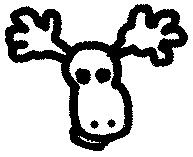Guest
Stumpy: RE: "lube wars". It sounds like you testing for rust preservative. No?
If so that has been done at least five million times in labs including the military.
Cosmoline is the BEST even aginst salt water.
If you want a lube for long term storage and can't find cosmo get some LPS 3. They claim you can spray the stuff on plain carbon steel, toss in it your yard and a year later it won't show a bit of rust.
I did just that, and sure 'nuff, no rust. LPS 3, great stuff. it's PRESERVATIVE, not a lube so I wouldn't spray it in the action of your auto pistol or revolver, but on the bore or outside metal it can't be beat. From the smell of it I suspect it has a beeswax base.
LPS 2 is a fine LUBE as are many others. Sheath ain't worth a crap as a preservative compared to others and NOTHING beats LPS 3.
If so that has been done at least five million times in labs including the military.
Cosmoline is the BEST even aginst salt water.
If you want a lube for long term storage and can't find cosmo get some LPS 3. They claim you can spray the stuff on plain carbon steel, toss in it your yard and a year later it won't show a bit of rust.
I did just that, and sure 'nuff, no rust. LPS 3, great stuff. it's PRESERVATIVE, not a lube so I wouldn't spray it in the action of your auto pistol or revolver, but on the bore or outside metal it can't be beat. From the smell of it I suspect it has a beeswax base.
LPS 2 is a fine LUBE as are many others. Sheath ain't worth a crap as a preservative compared to others and NOTHING beats LPS 3.






